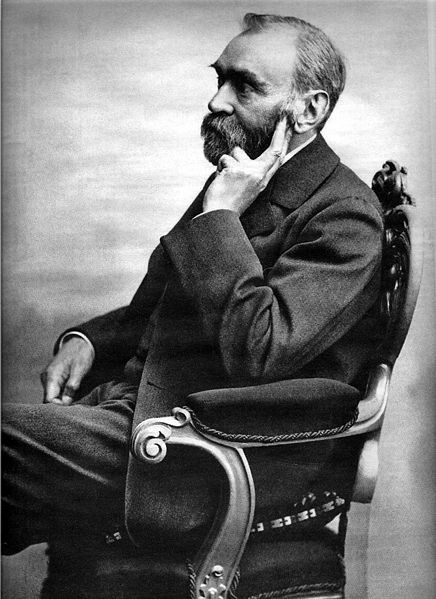The 2009 Nobel Science Prizes
Interview with
Chris - Well also this week, we've of course have the Nobel Prizes being awarded and before that, the IgNobel's - but that's a different story. And we're joined now by Richard Van Noorden who is an Assistant News Editor with Nature and he's going to tell us a bit more about them. Hello, Richard.
Richard - Hi, Chris.
Chris - Welcome back to the Naked Scientists. So tell us a bit about the Nobels this week. Who got what?
 Richard - Well interesting that you should be talking about cameras and CCDs and how to turn lights into electronics because the Physics Prize this week went to Willard Boyle and George Smith for their work on inventing the CCD, the thing in your digital camera that turns optical light into a digital picture. And also, to Charles Kao and he worked on fibre optic cables, those billions of kilometres of fibre optic cables spanning the globe and the light bounces along inside them by total internal reflection. And it's a very efficient way of carrying the signal.
Richard - Well interesting that you should be talking about cameras and CCDs and how to turn lights into electronics because the Physics Prize this week went to Willard Boyle and George Smith for their work on inventing the CCD, the thing in your digital camera that turns optical light into a digital picture. And also, to Charles Kao and he worked on fibre optic cables, those billions of kilometres of fibre optic cables spanning the globe and the light bounces along inside them by total internal reflection. And it's a very efficient way of carrying the signal.
Chris - Indeed, we couldn't basically have the internet without fibre optics, could we?
Richard - Exactly, so. Now the other prizes in Physiology or Medicine went to Elizabeth Blackburn, Carol Greider and Jack Szostak for the their work on telomeres. These are essentially the caps at the end of your chromosomes, the things your DNA is wrapped up in and they're sort of protective caps. What Blackburn and Greider and Szostak found was exactly how these telomeres work and what they do. What happens is, whenever your cells divide you need to make new cells, and you need to copy your DNA. The DNA polymerase, the enzyme that reads your DNA can't quite read to the end of the chromosome and it would get frayed like a piece of frayed string. And you can imagine your cells would keep dividing and your chromosomes would keep fraying and in the end, your DNA would actually degrade. And what these telomere caps do is they add on to the end of the chromosome, they're repetitive DNA structures, they keep getting built in there every time. And so, they prevent the cells that carry them from degrading, but you also need an enzyme to build them up called telomerase, that builds up the telomeres. This is for example, is what you have in cells that are immortal. Cells that never ever stop dividing.
Chris - Cancerous cells?
Richard - Yes, cancerous cells. So many, many cells that turn cancerous also have this enzyme telomerase. But not just cancerous cells. Also stem cells, those cells that can turn to into many other different types of cells. So, what they did, what Blackburn and Greider and Szostak did, is work out how these process is working and what the structures are. And nowadays, the hope is that we could perhaps use this to understand stem cells better possibly to attack tumour cells, cancerous cells, and really, the possibilities are endless here.
Chris - What about Chemistry, another subject dear to my heart?
Richard - Yeah, Chemistry Prize. Another biological prize interestingly enough. It went to Ada Yonath, Venkatraman Ramakrishnan who works in Cambridge just a few miles away from where you are and Thomsa Steitz in the US. And their prize was for working out the structure of the ribosome, the protein-making factory in all of our cells. What the ribosome does is it takes DNA which is, as it were, the blueprint and then it has to translate that into the proteins, the things that actually do the work in your cells that buzz around, and do all the reactions. And Yonath back in the 1980s decided that this enormous ribosome structure contains over a million atoms, she decided that she'd try to crystallize it so you could bounce x-rays through it and from the way they were scattered, work out where the atoms were. Everybody else thought this was a ridiculous idea, but she did manage to crystallize some ribosomes by taking some ribosomes from organisms that lived in the dead sea, at very high temperatures. Their ribosomes are very stable and easier to crystallize. And then Ramakrishnan and Steitz came along and they worked out the exact structure of the ribosome. They actually completed this task in 2000. Now, what's interesting about this is we're now just working on antibiotics that can attack the ribosomes of bacteria. Remember, you need your ribosomes to make proteins. So, what we're trying to work on, in fact, Steitz's group have a company that are doing this, is to get antibiotics that by attacking ribosomes, prevent bacteria from making proteins. And therefore, stop the bacteria dividing. This could be a way to basically attack bacteria that have become resistant to the antibiotics we have at the moment.
Chris - Fantastic. Well, Richard thank you for joining us to tell us all about that and we're going to ask you to comment on the Peace Prize, somewhat controversial of course. Thank you very much. That's Richard Van Noorden who is from the journal, Nature bringing us up to speed on this week's Nobel Prize winners.
- Previous Continental Collisons and Carbon Dioxide
- Next Technology in India









Comments
Add a comment